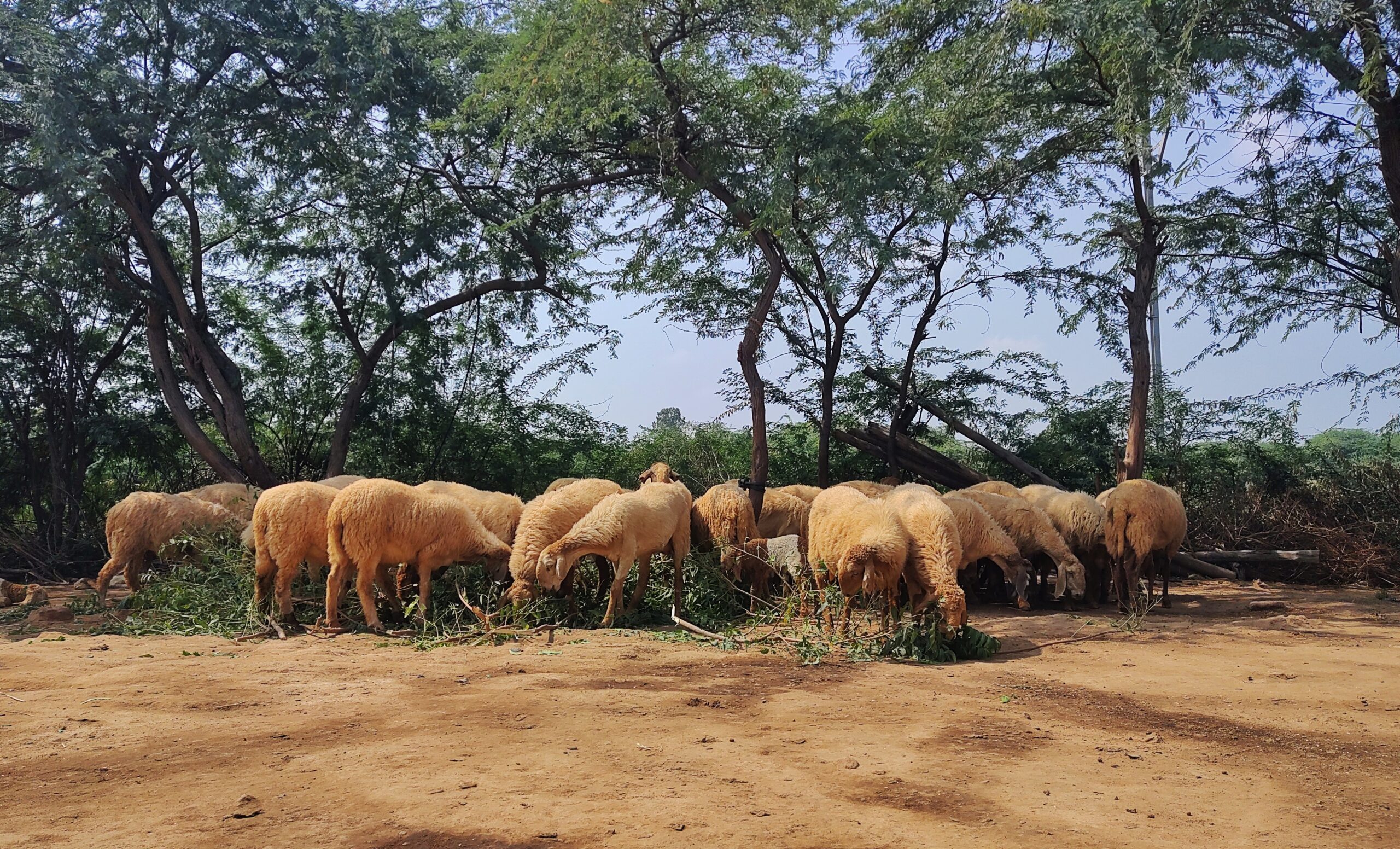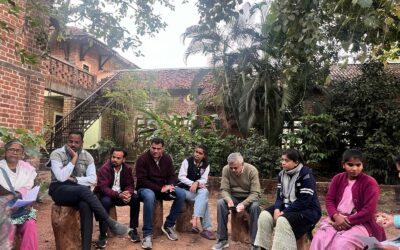Winter is here and it comes with warm sweaters, shawls and rajais. Sheep wool, and perhaps camel, rabbit, and yak wool, mostly make these winter clothes, according to common knowledge. However, this belief is not entirely accurate. The majority of contemporary winter apparel is, in fact, fashioned from acrylic fibres.

Acrylic fibers, derived as a by-product of petroleum, are artificial. Manufacturers produce acrylic fiber fabrics from a synthetic polymer known as acrylonitrile, making acrylic fabric a fossil fuel-based fiber. In chemistry, a monomer is a molecule that have two or more bonding sites which can react with other monomers to form polymers. In athletic equipment, athletic pants, track suits, and hoodies, people prefer using acrylic fiber, even though it is the least breathable.
This shift from use of wool to acrylic fibres is mainly due to the cost of the raw material and processing that goes in getting the finished product. The acrylic fibres are cheaper than the wool and can be mass produced at lower costs. On the other hand, wool is expensive because of the process it has to undergo before turning into a yarn. For example, one has to sort and grade the wool fiber based on its quality and staple length. After that, the wool needs to be scoured or washed with detergent. These two processes further increase the cost of wool.
Watch: A Level Biology: Monomers and Polymers
Also watch: Polyester Fiber – Production process, Properties and Uses
Sheep shearing is basically cutting or removing the woollen fleece from the sheep. The sheep wool is made up of a protein called ‘Keratin’ which is also present in the human hair. Throughout history, people have traditionally used wool to make various types of clothes for different seasons in India. For instance, the Deccani sheep wool is used to make ‘Gongadi,’ a woollen blanket that has served as a raincoat in Telangana, Karnataka, and Maharashtra. Likewise, ‘Ghugi’ or ‘Ghoogi’ is a felted wool apparel made from the indigenous wool of Gujarat and utilized as a raincoat.

One may ask why is sheep shearing a struggle despite the numerous things made from wool and the presence of a vast carpet industry? Let’s get into the story.

The Perils Of Sheep Shearing
Mohan bhai Sinh is a Maldhari (from pastoral community) of Gujarat and he lives in a village called ‘Ashapar’, 80 kms away from Bhuj, Kutch. He has 400 sheep and a few goats. He usually grazes his herd around his village in the thorn forests of Kutch. Every year weeks before summer season and a month before the on set of winter, he has to shear the sheep. Shearing of sheep at regular intervals is important to protect them from Parasites and infections and also from wool blindness. We, who trim our hairs and beard regularly may think that it’s an easy task but actually it’s not. Shearing must be done with utmost care to avoid the possibility of hurting the animals and causing cuts on their skin.

Mohan bhai, on a yearly basis during the shearing season, engages two skilled shearers from Rajasthan. These experienced shearers visit Ashapar each season and shear the sheep, charging between Rs. 12 and Rs. 15 per sheep based on demand. Consequently, Mohan bhai incurs an annual expense ranging from Rs. 4,800 to Rs. 6,000 for shearing his sheep, amounting to a total expenditure of Rs. 9,600 to Rs. 12,000 for his entire herd.
In response to this challenging situation, Mohan bhai has taken matters into his own hands by learning the art of shearing. He now personally shears his entire herd, although the manual shearing process initially demands a considerable amount of time. Considering the time investment, Mohan bhai is contemplating learning machine shearing and intends to purchase a machine in the upcoming shearing season. However, it’s important to note that not all Maldharis share the same approach, as the majority still prefer to pay for professional shearing services. But, this is not the case with all the Maldharis and majority of the people still prefer to pay for the shearing.

Decline Of The Indigenous Wool Market in Gujarat
After shearing, most people end up discarding the wool. This is primarily because there is no market or demand for the indigenous wool in Gujarat. After multiple visits to the traders across Gujarat, we understood the reasons for this.
- The wool from the Kutch/Gujarat region is coarse which is not suitable for apparels.
- Failure to sort or grade the wool after shearing contributes to the poor quality of the wool itself.
- The wool from Kutch/Gujarat has a short staple which makes it less desirable.
- Wool traders and manufacturers prefer the cheap, waste wool from China that has flooded the markets.
The local value chains of various woolen apparels, initially reliant on indigenous wool, are undergoing a shift. They are now moving towards ‘Vilayati wool’ or foreign wool, such as that from Merino sheep, due to its softness.
So throwing away is the easiest thing Mohan bhai can do to get rid of the wool. However, the shearers from Rajasthan, whom Mohan bhai engages, not only shear the sheep but also collect the wool from him without any charge. Subsequently, these shearers sell the accumulated wool to traders. The traders, in turn, market the wool at the Bikaner wool mandi, recognized as the largest wool market in Asia.
Gujarat’s Wool Dilemma
Essentially, Mohan bhai expends approximately Rs. 12,000 annually to shear his sheep and generate wool. This is either discard or provided for free to the shearers, who subsequently sell it to traders. The wool, which fetches a minimum price of Rs. 15 to Rs. 20 in the wool market, brings no returns for Mohan bhai as a Maldhari. This narrative isn’t unique to Mohan bhai; it mirrors the experiences of thousands of Maldharis in Gujarat.
Gujarat boasts a sheep population of approximately 17,87,263, as detailed in the attached file from the animal husbandry department. The state produces an estimated two million tons of wool, based on insights gathered from five wool traders in Gujarat. Regrettably, the discarding of this wool has transformed what was once a source of supplementary income into a burden. As a result of this, there is a change in the type of animals’ people want to keep.
Because there is no demand for wool, Maldharis are shifting towards meaty breeds for example ‘Baradi‘. As a result of this the indigenous breeds of Gujarat ‘Pattanwadi’ and ‘Marwari’ sheep have decreased in numbers. There are also people shifting to other livelihoods like agriculture, industrial labor and opening tea stalls on the highways. Besides this, overgrazing and climate change also add to the challenge.




0 Comments